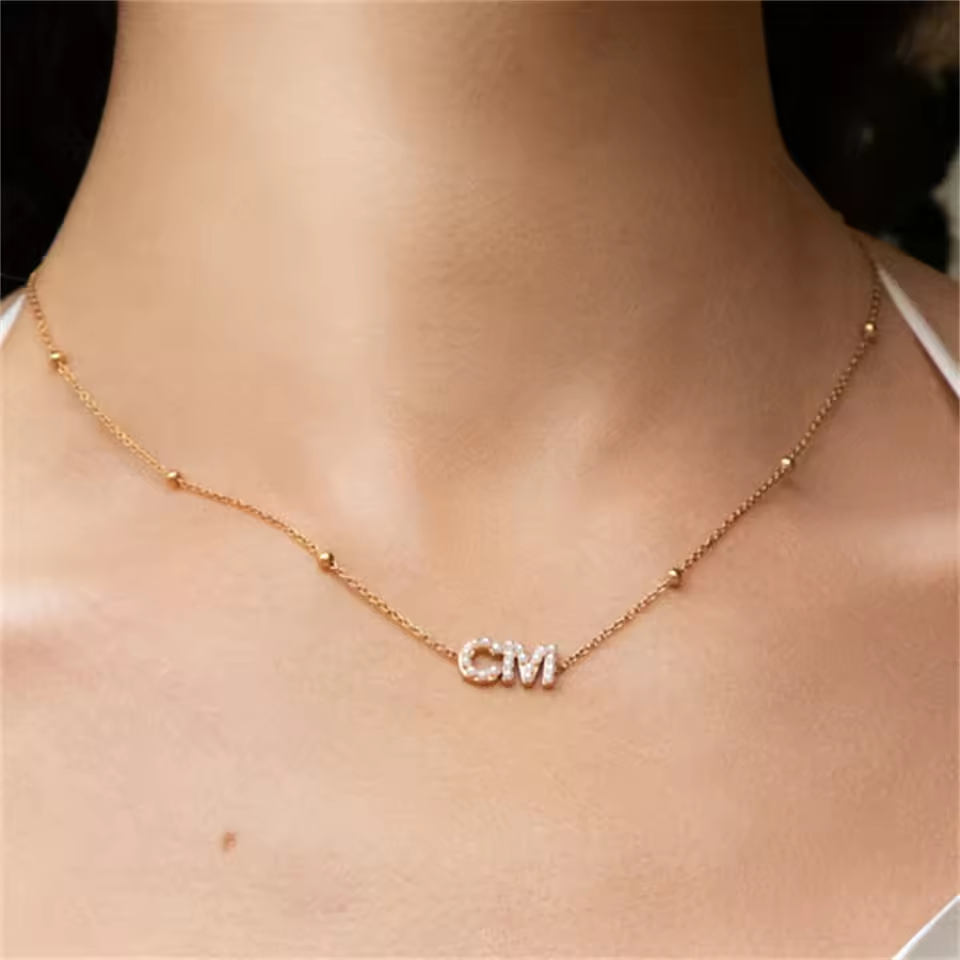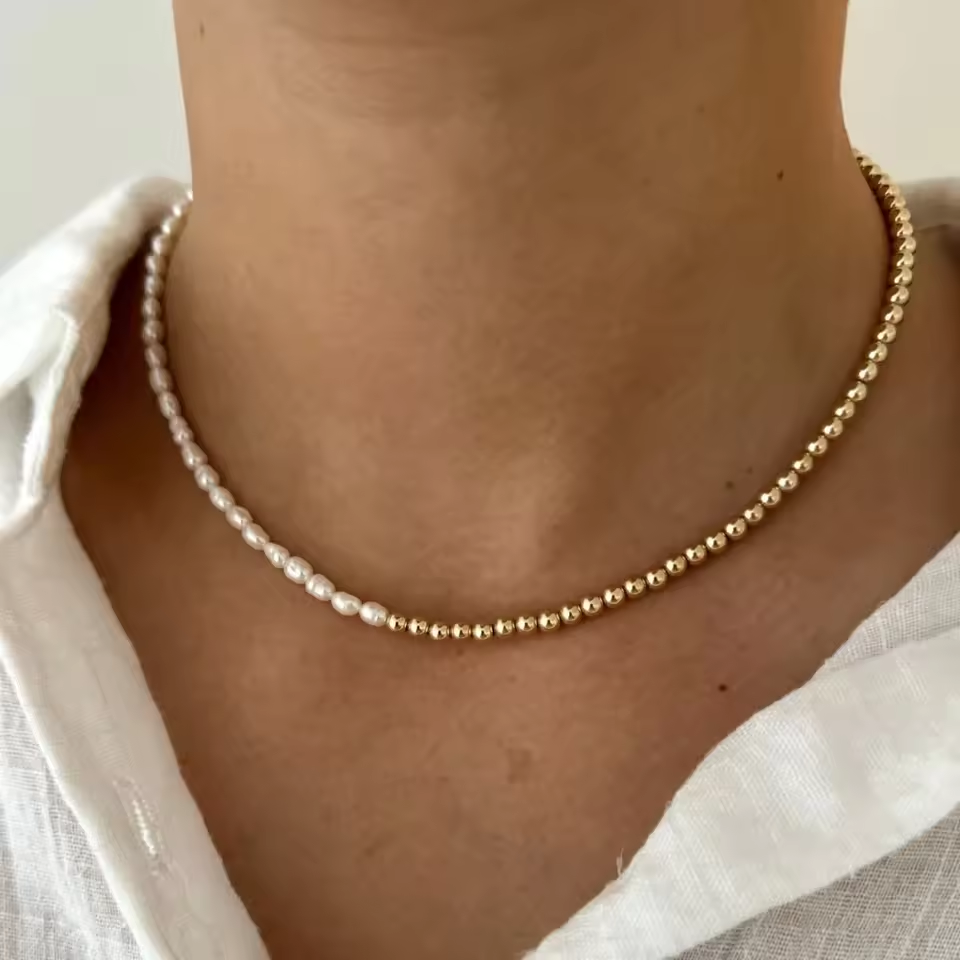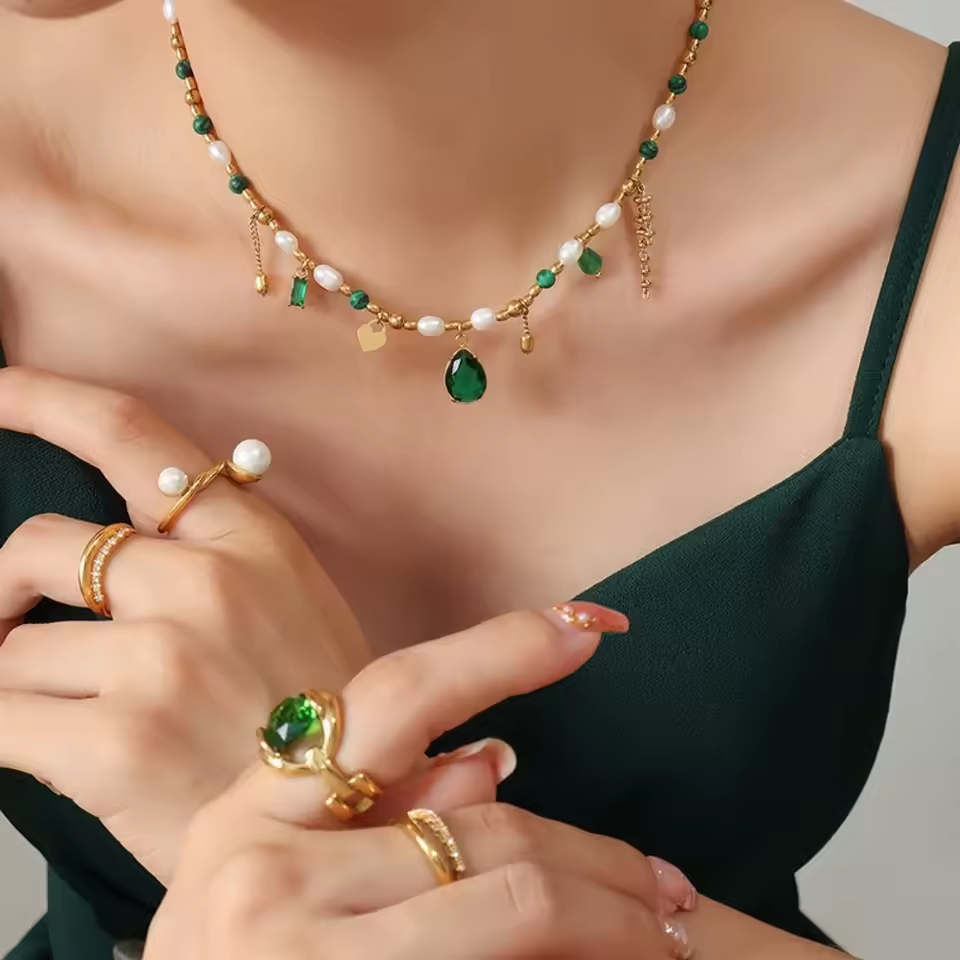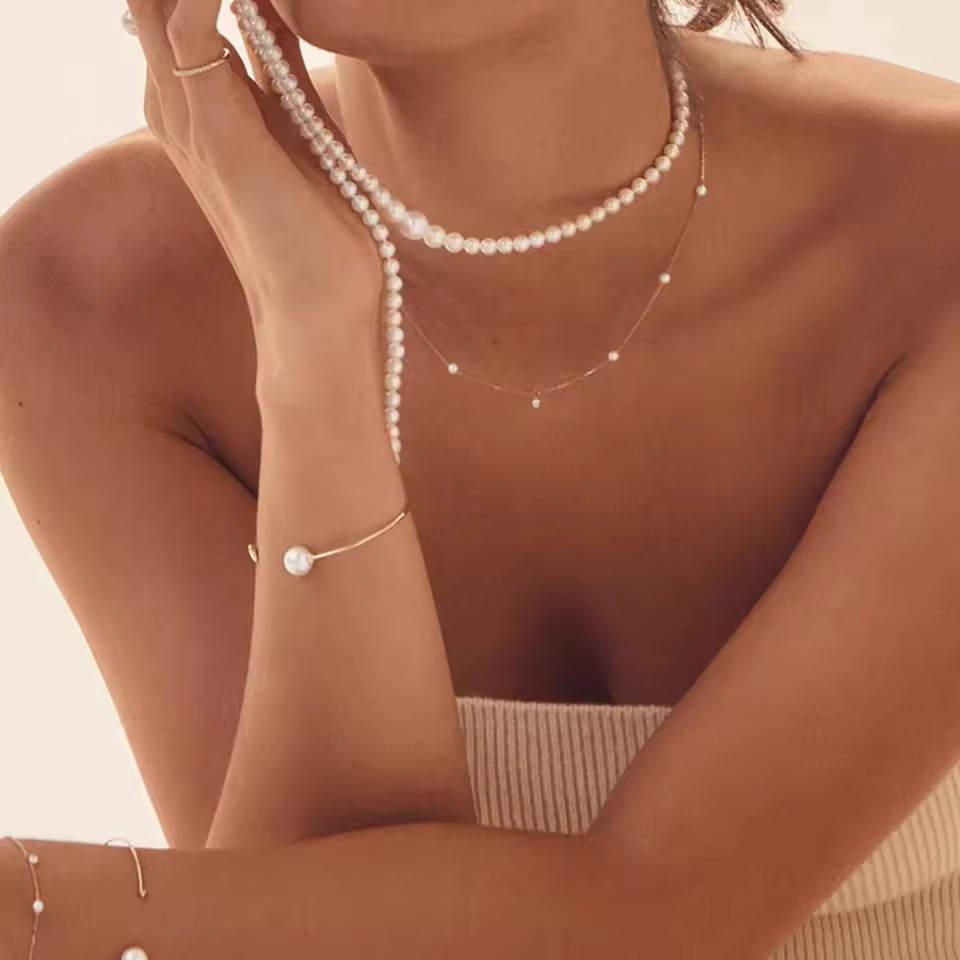The Origins and History of Freshwater Pearls
Freshwater pearls boast a rich heritage steeped in history. Their origins trace back to ancient China, about 2,000 years ago. Early references include Chinese records where they valued these gems as royal gifts. Beyond China, freshwater pearls became royal status symbols in many cultures. Over time, pearl cultivation began to spread globally. This practice, called ‘pearl farming,’ marked the start of a new era for freshwater pearl accessories.

Techniques refined through time, made freshwater pearls more accessible. But initially, royalty and nobility mainly wore them. In the 1900s, they surged in popular fashion. The advanced farming methods made the once-exclusive freshwater pearl necklace a treasure for everyone. Today, freshwater pearls continue to captivate with their luster and charm. They remind us of their storied past and timeless beauty.
Types of Freshwater Pearls and Their Unique Characteristics
Freshwater pearls come in various forms, each with unique features. The most common types are the classic rounds, near-rounds, oval, drop, and baroque pearls. Classic round freshwater pearls are highly prized for their perfect shape. They are the traditional choice for a timeless freshwater pearl necklace. Near-round pearls are similar but may not be perfectly spherical. Ovals are elongated and versatile, while drop pearls have a teardrop shape ideal for pendants. Baroque pearls are irregular and unique; each has a distinctive texture and form.
Freshwater pearls also vary in color. They range from soft whites and pinks to rich lavenders and peacock shades. White pearls are iconic and radiate elegance. Pink and lavender pearls offer a subtle hint of color and work well with different outfits. Peacock pearls are known for their dark, iridescent colors. They catch the light and show different hues from various angles.
Size is another characteristic of freshwater pearls. Smaller pearls are delicate and often used in bracelets and earrings. Larger pearls make a statement and are typically found in standout necklaces. Lastly, luster is key. Pearls with high luster have a shiny surface and reflect light well. Those with lower luster may appear softer or more muted. A quality freshwater pearl necklace will have a consistent luster throughout.
In conclusion, when searching for a freshwater pearl necklace, consider the type, color, size, and luster. These factors determine the necklace’s look, style, and how it complements your wardrobe. By understanding these unique characteristics, you can choose a piece that highlights your personal style perfectly.
How to Choose a Quality Freshwater Pearl Necklace
When selecting a quality freshwater pearl necklace, there are several factors to consider. Here’s a guide to help you make an informed choice:
Assess the Luster
Luster is the shine and reflection of light on the pearl’s surface. Look for pearls that have a bright and reflective luster. This indicates health and quality. Avoid pearls with a dull sheen, as they may be of lower quality.
Examine the Surface
Check the pearl’s surface for smoothness. High-quality pearls are mostly free from blemishes or irregularities. However, some texture is natural. Pearls with excessive marks or pits should be avoided.
Consider the Shape
While the perfect round shape is classic, other shapes like oval or baroque can be unique. Choose the shape that appeals to you and suits your style, but keep in mind that perfectly round pearls are often more valuable.
Check the Color
Freshwater pearls come in various colors. Decide if you want traditional white or something with a hint of color like pink or lavender. Ensure the color is even and natural-looking, without any signs of dye.
Size Matters
The size of the pearls affects the necklace’s overall look and feel. Larger pearls make a bold statement, while smaller pearls are more subtle. Choose a size that complements your personal style and occasion.
Look for Uniformity
For necklaces, it’s important that the pearls match in terms of luster, color, and size. Uniformity enhances the necklace’s beauty and symmetry.
Consider the Necklace Construction
The way a necklace is knotted and strung contributes to its durability. Strong silk or nylon thread is a good sign. Also, knots between pearls can prevent loss if the necklace breaks.
By taking these aspects into account, you’ll be better equipped to select a freshwater pearl necklace that is not only beautiful but also of great quality. Combine these tips with your personal preferences to find the perfect addition to your jewelry collection.
 The Making of a Freshwater Pearl Necklace
The Making of a Freshwater Pearl Necklace
Creating a freshwater pearl necklace involves a series of meticulous steps. First, farmers introduce mantle tissue into host mollusks. This starts the pearl-forming process. Over time, the mollusks coat the tissue with nacre. This substance gives pearls their luster and color. It may take years for a pearl to reach a desirable size and quality.
Once harvested, experts sort the pearls by size, shape, and luster. They then match them carefully to ensure consistency in a necklace. A skilled jeweler drills each pearl without damaging it. They string the pearls on fine silk or nylon thread. Knots are often tied between each pearl. This is to protect them from rubbing against each other. It also keeps them in place if the string breaks.
The clasp is an important part of the necklace as well. A high-quality clasp keeps the necklace secure around the neck. Jewelers often use metals like gold or sterling silver for aesthetics and durability.
A well-made freshwater pearl necklace is both a work of art and a fashion statement. Each step, from the mollusk to the marketplace, requires precision and care. This attention to detail ensures that the beauty of the necklace is preserved. It also ensures that it stands the test of time, maintaining its elegance for years to come.
Style Guide: How to Wear Your Freshwater Pearl Necklace
Wearing a freshwater pearl necklace can enhance any outfit, lending it a touch of elegance and sophistication. Here’s a style guide to ensure you make the most of this classic piece of jewelry:
Daytime Sophistication
For daytime events or the office, keep it simple. Pair a single-strand freshwater pearl necklace with a blouse and blazer. This adds a hint of refinement without going overboard. Stick to smaller pearls to maintain subtlety.
Evening Elegance
In the evening, let your pearls be the star. Layer multiple strands for a luxurious look. Larger pearls are perfect for these occasions. They stand out beautifully against dark or solid-color dresses.
Casual Chic
Pearls can also fit casual settings. Wear a longer, perhaps baroque style freshwater pearl necklace with a simple tee and jeans. This creates a stylish contrast that’s eye-catching and trendy.
Bridal Beauty
A freshwater pearl necklace is the quintessence of bridal wear. Opt for a classic round pearl necklace to complement your wedding gown. Their natural luster adds a romantic glow.
Mixing and Matching
Freshwater pearls blend well with other jewelry. Pair them with gold or silver chains for varied textures. Just make sure not to overshadow the pearls’ natural beauty.
Remember, no matter the occasion, freshwater pearls should be worn with confidence. Trust in their inherent charm to elevate your look. A well-chosen freshwater pearl necklace is a versatile addition to your jewelry collection. It adapts to any style, from the highest formality to the most laid-back appearance.
 Caring for Your Freshwater Pearl Jewelry
Caring for Your Freshwater Pearl Jewelry
Owning a freshwater pearl necklace means caring for a piece of natural art. Here are tips to keep your pearls in pristine condition:
Handle with Love
When handling pearls, do it gently. Natural oils from your skin can add a soft luster, but too much handling may harm them. Always pick up your necklace by the clasp, not the pearls.
Clean with Care
After wearing, wipe your pearls with a soft, damp cloth. This removes any residue. For deeper cleaning, use minimal mild soap and water. Never use harsh chemicals or ultrasonic cleaners.
Store Safely
Store your necklace flat, in a soft pouch. This prevents scratches and pressure that can crack the pearls. Avoid hanging necklaces, as this can stretch the thread.
Keep Pearls Dry
Keep them away from water when you can. Water can weaken silk threads and affect the luster. Take off your necklace before swimming or showering.
Avoid Contact with Chemicals
Cosmetics, perfumes, and hair sprays contain chemicals that can dull the pearl’s shine. Apply these products before you put on your necklace.
Regular Restringing
With frequent wear, consider restringing your pearls annually. Silk threads wear down over time. Regular restringing ensures durability and prevents loss.
Check the Clasp
Examine the clasp for signs of wear. A secure clasp is essential for the safety of your precious pearls.
By following these simple steps, you can ensure that your freshwater pearl necklace remains a symbol of elegance and class for years to come.
 The Symbolism and Cultural Significance of Pearls
The Symbolism and Cultural Significance of Pearls
Throughout history, pearls have held deep meaning and significance across different cultures. They not only represent beauty and elegance but also convey rich symbolic messages.
Spiritual and Emotional Significance
Many cultures view pearls as symbols of purity and integrity. For instance, pearls often play essential roles in wedding ceremonies. They express purity and bring good fortune to the newlyweds. People also say pearls ward off evil and attract wealth, making them prized amulets.
Symbol of Wisdom
In some traditions, the formation of a pearl is likened to the acquisition of wisdom. A grain of sand, through challenge and endurance, transforms into something precious, much like life experience becomes wisdom.
Status and Power
Historically, pearls were so rare they symbolized status and power. Royalty and nobility would showcase their wealth and influence through opulent freshwater pearl necklaces. Laws even restricted the wearing of pearls to certain classes, heightening their status symbol.
Cultural Tales and Myths
Pearls feature in many myths. Greeks associated them with love and marriage. Chinese legends saw pearls as protection and good health. In many cultures, pearls are gifts from the sea, symbolizing the mystical and unknown.
Mourning and Remembrance
Some cultures have used pearls as symbols of mourning. Black or dark pearls, especially, have been connected with mourning jewelry, representing tears and the passage to the afterlife.
So, when one purchases a freshwater pearl necklace, they’re not just acquiring a piece of jewelry. They are embracing a symbol laden with history, emotion, and cultural significance, enhancing its timeless elegance.
 Where to Buy Authentic Freshwater Pearl Necklaces
Where to Buy Authentic Freshwater Pearl Necklaces
When looking for authentic freshwater pearl necklaces, it’s essential to choose trustworthy retailers. Here are some tips:
Choose Reputable Jewelers
Always buy from established jewelers with a solid reputation. Look for ones with experience and a good track record. They should offer certification for their pearls.
Check Reviews and Ratings
Read customer reviews and check ratings before you buy. This gives you an idea of the quality and service. Happy customers often mean trustworthy sellers.
Look for Certificates of Authenticity
Authentic pearl necklaces come with certificates. These prove their origin and quality. Ensure the jeweler provides this.
Consider Online Stores
Online stores offer a wide range of options. They often provide detailed descriptions and images. But be sure to verify their credibility.
Visit Local Boutiques
Local boutiques may carry unique and high-quality necklaces. You can see and touch the pearls before buying. It helps in making a confident choice.
Ask About the Return Policy
Check the return policy before purchasing. It should be fair and customer-friendly. This offers peace of mind if you need to return the necklace.
By following these tips, you can find an authentic freshwater pearl necklace that adds timeless elegance to your collection.